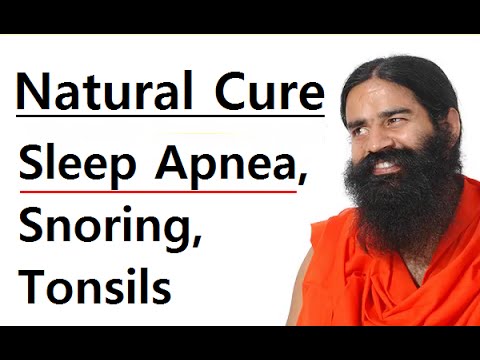Sound sleep is one of the most important signs of physical and mental well -being of a person. However, sleep apnea is a real trouble for several humans, hampering their quality of sleep, and hence their quality of life. Snoring is a phenomenon considered to be quite common, but loud snoring accompanied by fatigue during the day are signs of sleep apnea, a sleeping disorder that might turn fatal, as it restricts your breathing. Other symptoms include depression, fatigue, anxiety, headaches and weight problems. Simple exercises, yoga and a proper lifestyle can help you get a peaceful, refreshing sleep; so tune in to them.
Yoga – How Does It Help?
Table of Contents
Contrary to the misinformed beliefs, yoga is not some outdated practice that involves twisting your body in uncomfortable positions; it can actually help you reduce weight naturally. Practicing yoga also improve your condition by strengthening the diaphragm and increasing the oxygen intake.
Breathing Exercises To The Rescue
The best solution to sleep apnea is yoga nidra that helps you relax your body. Also pranayama teaches you the art of breathing. Take deep breaths through your nose and fill your lungs with oxygen. This boosts up your metabolism and also rids your body of the harmful toxins.
Some Information on Important Asanas
Simple stretching exercises could well cure sleep apnea. Plus, here are some yoga asanas that would definitely help – Tadasana or the Mountain Pose, Shavasana or Corpse Pose, Salabhasana; the Locust pose, Bhujangasana; the Cobra pose and Meru Vakrasana. Here’s more on them-
- Tadasana: also called the mountain pose, it basically teaches you the correct standing posture. Keep your feet together and hands at you side with your back straight.
- Shavasana: or the corpse pose involves lying on your back with the arms and legs spread at about 45 degrees. Keep your eyes closed and take deep breaths for better relaxation.
- Salabhasana: or the locust pose involves spine stretching by bending the back using the strength of the upper and middle back to lift the legs as high as possible.
- Bhujangasana: or the cobra pose is when you lift your chest upwards keeping the palms and legs on the floor.
- Meru Vakrasana: involves simple stretching of the body by twisting the spine sideways.
Tongue Exercises for Sleep Apnea
Other Exercises Worth A Try
- A simple way to improve your sleeping disorder is through throat exercises where you make a chewing motion keeping some distance between the molars on both sides.
- Â Another exercise that you can try is sticking out your tongue and holding it for some time.
- Â Also regular didgeridoo playing reduces daytime fatigue and helps cure sleep apnea.
- Â Other methods include singing and yawning repeatedly.
Lifestyle Changes
Adopt a healthy way of living for your physical and mental fitness; here’s what you need to do-
Being overweight results in accumulation of extra tissue in the back your throat that restricts breathing when you sleep. Yoga is one of the best and most natural ways of losing weight that would open up your throat. Regular exercises like running or aerobics also help.
Quit smoking and other addictions
Smoking increases inflammation of the throat and blocks the air passage while alcohol and other drugs interfere with the breathing by relaxing the throat muscles. This is fatal for you as it blocks the air passage and reduces the oxygen intake. Quitting these habits would bring about a drastic improvement in your health.
Healthy diet
Avoid eating food that is full of carbohydrates and fats. Eat natural and nutritious, like fresh fruits, vegetables, grains, nuts, dairy products. Do not eat heavy meals as they make you lazy and sluggish. Food such as meat and junk food should be avoided. You should also keep in check your sugar and caffeine intake as they over stimulate your mind and body.
Follow a healthy routine
Following a systematic routine helps you get the required amount of sleep daily thus reducing episodes of sleep apnea.
Some tips to prevent sleep apnea:
- Sleep on your side as sleeping on your back can block your air passage.
- Prop your head up a few inches while sleeping as this would help you breathe better
- Maintain a straight posture when practicing yoga.
- Try chewing gum or any other activity that would tighten the muscles that keep your mouth closed.
- Use breathing strips, nasal spray or a nasal dilator to open up your nasal passage.

